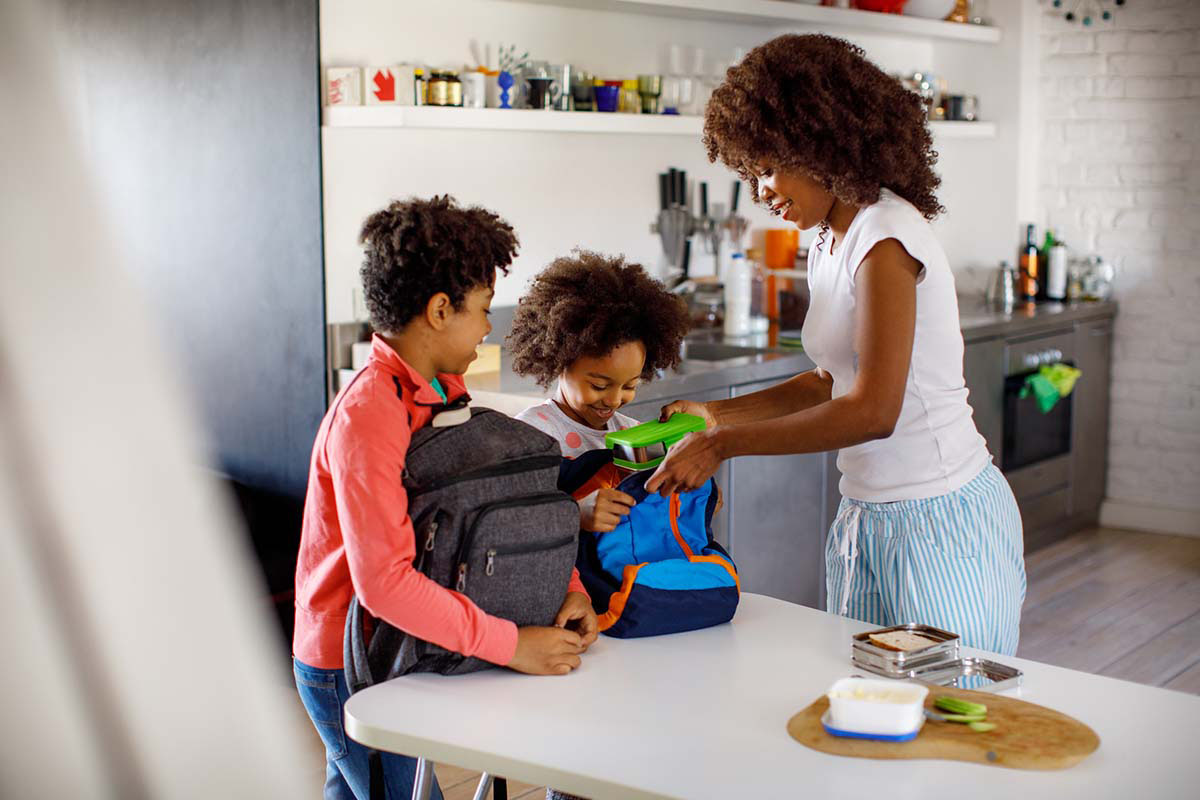7 Back-to-School Tips That Go Beyond Budgeting

National Back-to-School Prep Day occurs annually on August 15, as the summer winds down and fall is just around the corner. While the hallmark of the back-to-school season is shopping for notebooks, backpacks, and supplies, there are plenty of lifestyle changes you shouldn’t forget.
Whether your children are back in the classroom or on a hybrid model, here are seven smart tips for a smooth back to school transition this year.
1. Keep Chores and Activities Organized After the Summer
Summer downtime may have been filled with extracurricular activities, clubs, or just more involvement around the house. Stay organized going into the school year so these new habits don’t fall to the wayside as more piles on your plate.
Physical organization like chore charts, spreadsheets, or shared calendars allow everyone to see where they’re expected to be and when. Place calendars in a common location, such as on the fridge or in the mud room or go completely digital and share your schedule virtually.
If you grant your child an allowance, reevaluate the amount going into the next year. Will your child be doing less or different chores? Will they need extra funds for special lunches or book fairs? Take this opportunity to have an age-appropriate conversation about finances and let them feel included in the discussion.
2. Get Documents in Order
Doctor’s records, extracurricular signups, permission slips, field trip forms and more can become overwhelming before the waves of homework and assignments even begin to roll in. Stay on top of which documents are needed and their deadlines by maintaining a clearly marked file system.
If paperless is more your style, scan documents once the hard copies are no longer needed, or delay printing anything out until right before it is due to be handed in. Make sure to keep your virtual records just as neat and organized so you can find things on the fly.
Once the year progresses, make it a habit to sit down with your child weekly or monthly to clear out old assignments from their folders or binders to avoid the extra weight and hassle of carrying around old assignments. Sort these assignments by subject or type just in case you need to reference them in the future.
3. Make Mealtime Adjustments
Family sit-down meals may become rarer as the school year ramps up and lives get busier. Experiment with what meal preparation style works best for your family at each meal.
Ask yourself the following questions to see if your mealtime habits need a change:
- Who makes breakfast? Does everyone help themselves to something quick, or does one person make a meal for everyone?
- Is lunch purchased or packed? What is the monthly lunch budget for the cafeteria versus buying wholesale at the grocery store?
- Are lunches packed the night before or in the morning?
- Is there time after school between homework and activities to cook? Could weekend meal prep help take the pressure off during the week?
- As your child grows older, are their kitchen privileges expanding? Do you have time to show them how to safely use the oven, stove, or other kitchen tools during the summer so they can practice with your guidance before life gets busier?
4. Start Making Memories Early
You already know you want that first day of school, Halloween, recital, or formal photo now, so save yourself time by preparing in advance. These milestones will be here before you know it, so have your props, signs, and angles ready.
Keep everything in a location you’ll remember, and when that busy morning comes, you can easily snap a photo and still make it to homeroom before the bell. Plus, the smiles will be genuine, because if you’re less stressed, your little ones will be, too.
Scrapbooking these memories along the way will help your photos stay organized, without getting lost, and you’ll be able to get deals on seasonally relevant papers and stickers. Then, when the school year ends, the book is already ready to go for reminiscing.
5. Build a Remote Learning and Homework Station
Many parents and students had to get creative with an at-home workspace when remote learning became the new classroom. Even for students who have returned to school buildings full time, having a separate home space meant just for learning helps foster a productive mindset. This workspace can be used for remote days, snow days, or after-school projects.
By providing your child with a dedicated space for school, you are helping them to achieve the beginnings of a healthy work-life separation. In this space, provide them everything they need to complete their assignments without distraction or difficulty, and when the work is done, they can compartmentalize and de-stress for the next day.
6. Sort Through Old Clothes and Donate Before Buying Any New Wardrobe Items
A lot can change over the summer: growth spurts, fashion trends, school uniform changes, and more. Clothing that worked last year may no longer be appropriate, or some things may look too worse for wear when they’re pulled out of storage, like last year’s beat winter boots.
Once you establish a clothing budget for the new year, have a discussion with your child about their wardrobe for the new year. Don’t blindly follow trends but allow them to express themselves and their ever-evolving interests in a budget-friendly way you both agree on. If more expensive items are on the list, such as a formal outfit or new sports gear, explain how these items go into the budget.
To help keep costs down, consider thrifting and donations. For every new item that comes in, work together to choose one or more items that will be donated to those in need. Talk to your child about the memories they have associated with each piece of clothing and show them the value of obtaining things second-hand and the memories the donor had, too.
7. Practice Good Sleep Hygiene
No one wants to be exhausted on their first day. Establishing and maintaining good sleep hygiene impacts every facet of our lives. For your child, that includes their eating, activity, and school performance as well.
Start winding down 15 minutes earlier each day to get schedules back on track. Aim to start waking up on time at least 1-2 weeks before back to school to cement the habit. It takes time for our circadian rhythm to become adjusted to new sleep patterns, but once you’re in the habit, bedtimes will be a breeze.
Get Rewarded for All of Your Back-to-School Shopping Needs
Back-to-school shopping is no small undertaking, so use the tools at your disposal to get the most bang for your buck. Take advantage of rewards points or cash back on every purchase to make the most of every purchase.
Plus, see if your state has sales tax holidays for school supply shopping and plan to spend strategically to save as much as possible.
Whenever you’re school supply shopping, be sure to include your child in age-appropriate discussions about spending and budgeting to help build their financial foundation early.
For a before-school lesson, consider giving them the power to experience their own financial freedom with one of our Youth Accounts. Give them a budget and a list and see if they are able to stay within their limits and let them interact with the cashier at checkout. Financial literacy begins at home, so set your child on the road to success as early as possible.

